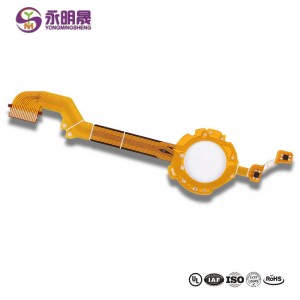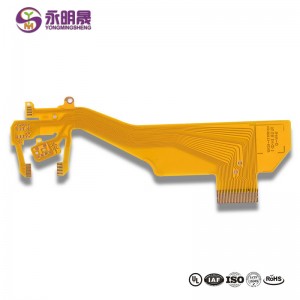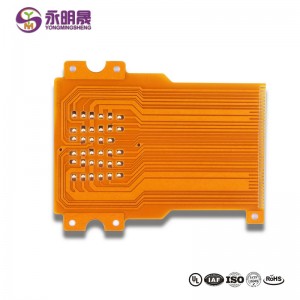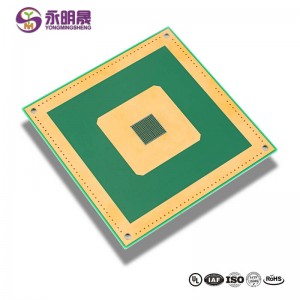Flex PCB Board 1Layer | YMSPCB
What is a FPC?
Flexible Printed Circuit (FPC) is a technology developed by the United States in the 1970s to develop space rocket technology, which is based on polyester film and polyimide as base material made of a kind of with high reliability, excellent rendition of flexible printed circuit. Through embedding circuit design in the flexible thin plastic sheet make the pile embedded in narrow and limited space a large number of precision components, so that a flexible printed circuit is formed.
This kind of circuit can be bent and folded at will, which is light in weight, small in volume, good in heat dissipation and easy to install. In the structure of flexible printed circuit, the materials are insulation film, conductor and adhesive.
Benefits of Flexible Printed Circuits
Capacity for design freedom
Flexible printed circuits have design freedom. They are not just limited to double layers. This is a great advantage for engineers. With this kind of freedom engineers are able to come up with complex configurations with different interconnections. In addition, flexible printed circuits are able to accommodate different components. If you ask any engineer or designer out there, they will tell you that the capacity to have design freedom goes a long way to give them the ability to exercise diversity and creativity.
They allow for high density configurations
Since they can allow for the combination of the plated through-hole and surface mounted components, they are able to give room for high density devices. The possibility of narrow separation between the components allows for the designing of lighter conductors. Through this, it is possible to provide space for additional components.
Accuracy of designs
Since flexible printed circuits are mostly designed using automated machinery, the margin of error in designs is less. This is a major characteristic of superior electronic devices. Most of the advanced electronic devices in use today use flexible circuit boards because of the high level of precision expected of them. Examples of the devices that require a high level of precision include those used in medical settings.
They are lightweight
The circuit boards can be folded easily, thus they can be positioned in compartments where other components find it hard to fit. Engineers take advantage of these circuits being lightweight to reduce package size.
Flexibility
Due to their ability to be flexible, they are able to relieve users of the stress of weight and space that rigid circuit boards often generate. It is possible to bend flexible circuit boards to various levels when installing them. This makes it possible to enhance the functionality levels of various electronics.
Long-term performance
The superior qualities of flexible circuit boards allow them to have durability and long-term performance. The characteristics of low ductility and mass contained in these boards allow them to overcome the influence of vibrations, therefore giving them the capacity to have improved performance. The ability of electronics to remain durable for a long time is a massive advantage for users. As you well know, electronics are common in households today, thus their ability to stay in good shape for a long time is an added value.
Cost reduction
The capacity of any device or material to reduce PCB cost compared to another gives it an added advantage. Given that flexible printed circuits have the ability to fit into a small space, they significantly reduce the cost of flexible printed circuit assembly. In the same vein, they reduce reworking time, testing time, and rejects, which translates to cost saving.
Viable for high temperature usage
The polyimide material in these circuit boards has the capacity to withstand high temperatures and also be resistant to materials like acids and oils. Flexible circuit boards can withstand temperatures as high as 400 degrees centigrade, which makes them a reliable option for high temperature applications.
Error reduction during flexible printed circuit assembly
The fact that they have accurate designs and have their production automated means that the chances of error during assembly are minimal.
You May Like:
1、How to produce FPC flexible circuit board with good quality
2、Description and method of FPC flexible circuit board
3、The method of improving FPC flexible circuit board quality is introduced
Video
Learn more about YMS products
Flexible Print Circuit 2Layer
FPC Circuit Board
Single Sided Flex PCB
Thick Copper PCB 10 Layer
Flex PCB Board 1Layer | YMSPCB Related Video:



